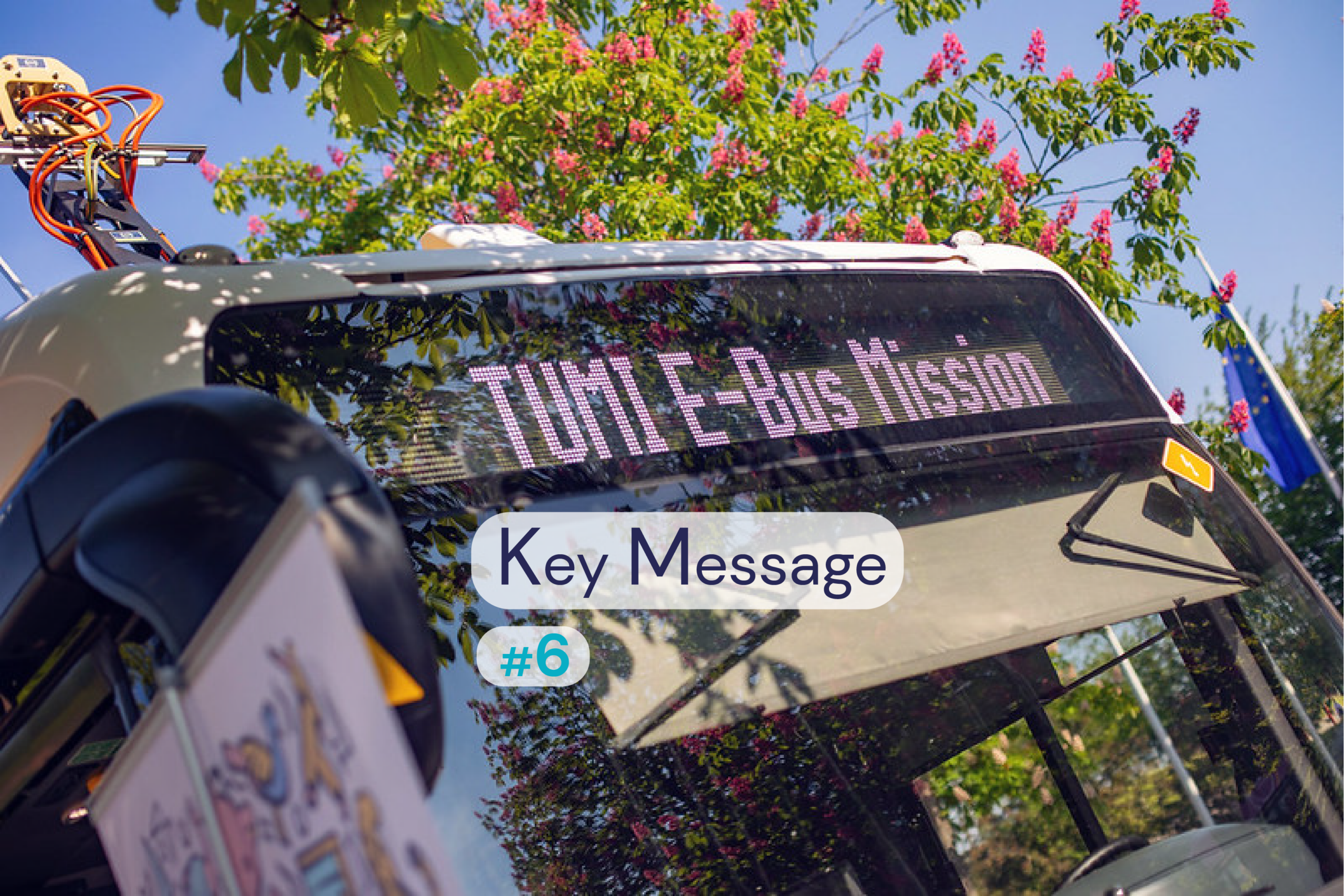Cities are driving the transition to e-buses through ambitious targets and policies.
In the past decade, a handful of cities have become pioneers in the field of electric mobility by setting ambitious targets on the electrification of their bus fleets. These targets are key because transitioning to a new technology in public transit entails considerable change along the value chain, including sourcing, manufacturing, procurement, infrastructure planning and operations. Binding commitments keep uncertainty to a minimum and initiate the necessary changes at pace. As more and more cities set targets for their transition to e-buses, they are getting the ball rolling on transformation processes that affect the whole sector.
Adoption targets differ, depending on cities’ climate change mitigation strategies and existing public transit offer. It is key, however, to commit to a clear timeframe. Jakarta, Indonesia, for instance, has pledged to make half of Transjakarta’s bus fleet electric by 2025 and up to 83 percent e-buses by 20301. The city of Barranquilla, Colombia, set a target of 300 e-buses by 2023 and a long-term target of 50% electrification (i.e. 1150 e-buses) by 2034, combining absolute and relative targets2.
Setting a clear target and timeframe doesn’t simply help holding policy makers accountable, it also sends an important signal to the market. It communicates to economic actors along the value chain, including manufacturers, bus operators and investors, that they can rely on e-buses being a part of the city’s future. This incentivizes them to set up processes that accelerate the transition to e-buses. A binding commitment by policy makers, ideally in the form of a law, can instill the necessary confidence in private actors. Paired with ambitious policies that enable the adoption of e-buses, e.g. imposing a ban on diesel buses or providing financial incentives for their acquisition, the impact can be far-reaching. In Brazil, for example, the city of São Paulo committed to the deployment of 2,600 e-buses by 2024 and banned the future purchase of diesel buses. Off the back of the pledge, Electra announced it will invest in a plant to manufacture 1,800 e-buses a year and Mercedes-Benz announced orders for their e-bus chassis in Brazil.
Cities are not alone in their fight for decarbonization – initiatives at the national level can further strengthen measures taken at city level and support a positive outcome. In Uganda, for example, the national government announced the creation of a National Charging System in late 2022 and set an aim of having at least 250 e-buses on the road by 20264. Such policies at the national level can further strengthen signals to the market, allocate financial resources to the acquisition and operation of e-buses, and direct political attention towards the issue.
Still, in the end, cities are in the driver’s seat of their e-bus journey. Even without support at a national level, cities worldwide are pushing forward the electrification of transit fleets. Cities in Brazil, Mexico, and beyond are making ambitious advances despite a lack of an overarching national strategy or legislation on e-buses. The TUMI E-Bus Mission is an integral part of supporting trailblazing cities navigate e-bus deployment and reach their electrification goals, one step at a time.
City spotlight
With a staggering 50% of trips being made by public transport every day, Mexico City’s transit system plays an outsized role in residents’ daily lives. This makes the electrification of the city’s bus fleet all the more pressing. Metrobús, the city’s BRT operator, set the ambitious goal to electrify its entire fleet by 2035. This goal set off a pilot project in 2021, in which 10 e-buses were deployed in the city. The pilot was so successful that Metrobús has continued working steadily towards its goal – in February 2023, 50 new buses were incorporated in the city’s BRT system, making it the largest fleet of articulated e-buses in Latin America and one of the largest worldwide.
Link to other key messages
Goals for the electrification of bus fleets often occur simultaneously with broader climate goals. To learn more about the link between e-bus deployment and climate goals, click here.
Other success stories in practice
San Jose dos Campos
Jakarta
São Paulo
